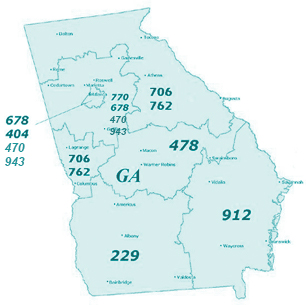Georgia currently has ten (10) area codes. And while that may sound like a lot of numbers, think of all the ways we use telephone numbers: multiple phone lines, modems, pagers, fax machines, wireless phones and some alarm systems. Also, competing local phone companies need phone numbers to serve their customers. When the pool of available numbers drops too low, a new area code is needed.

An overlay and a geographic split are methods used to implement new area codes.
In an overlay, the new area code has the same geographic boundary as the existing area code. Existing phone numbers and local calling scopes don't change, but 10-digit local dialing becomes necessary.
A geographic split divides an area code into two or more areas with each area receiving its own area code. Although local calls from one area code into another require dialing 10 digits, your local calling range does not change. Persons living in the geographic area that are assigned a new area code must make changes in stationery, advertisements, business cards, etc. as a different area code must be dialed to reach them.
The North American Numbering Plan Administrator (NANPA) determines the need for and the timing of area code relief. The administrator is Somos, Inc. The Public Service Commission (PSC) decides which method (overlay or geographical split) will be used to implement the new area code. Also, the PSC orders a transition period for customer notification and education to help avoid confusion when dialing a new number.